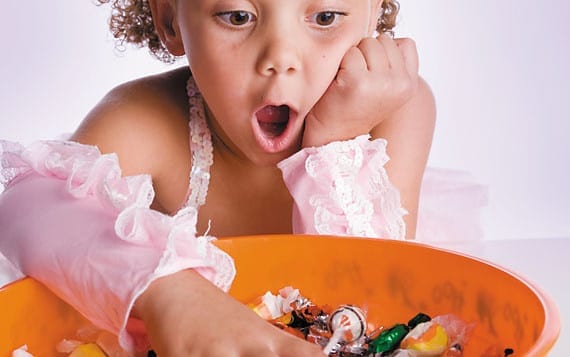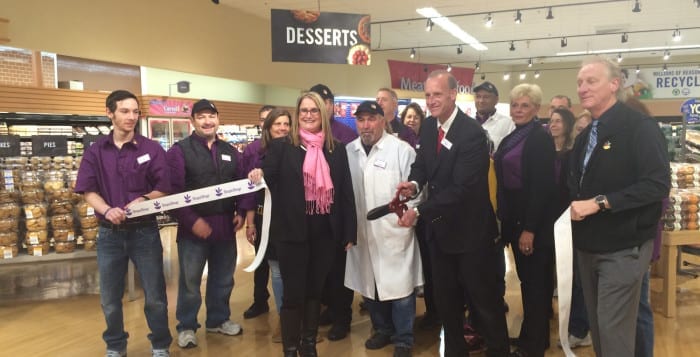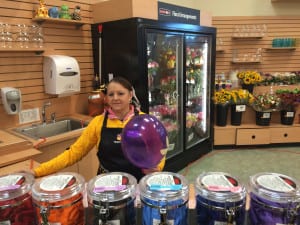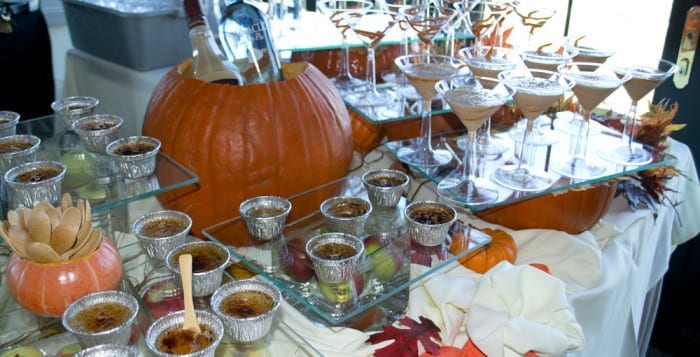By Lisa Steuer
In the 1990s, low-fat food products lined the shelves. Consumers believed that choosing a product with a low-fat label was essential for optimal health and fat loss. But today, experts say that a low-fat diet can be detrimental — as food that has the fat removed can instead be high in sugar and calories to make up for the lack of fat.
“The whole low-fat phase was problematic because people substituted refined carbohydrates, and that is a huge problem,” said Dr. Josephine Connolly-Schoonen, Ph.D., RD, the executive director of Stony Brook Medicine Nutrition Division and author of “Losing Weight Permanently with the Bull’s Eye Food Guide: Your Best Mix of Carbs, Proteins, and Fats.”
So with so many diets out there today, which work best for weight loss and health? Here is Connolly-Schoonen’s input.
Going Gluten Free
Gluten is a name for proteins found in wheat, and some common foods that contain gluten include pasta, bread, flour tortillas, oats, dressings, cereals, sauces and more. Go to any grocery store these days and you will most likely find a “gluten-free” section. And while people with Celiac disease cannot eat gluten because they will get sick, many people who aren’t allergic to gluten are touting the weight loss and health benefits of going gluten free.
But if you don’t have a gluten allergy, is it necessary or nutritionally wise to go gluten free?
“I think that many people are gluten intolerant and can benefit from a gluten-free diet,” said Connolly-Schoonen. “But, [it should be] a high-quality gluten-free diet — foods that never had gluten. So your starches are going to be from potato and rice and quinoa, not from gluten-free bread and gluten-free pasta.”
So while foods that are naturally gluten free are generally healthy, those who are not gluten-intolerant should be wary of processed foods that have had the gluten removed, as there now exists a big market and opportunity for companies wanting to take advantage of the gluten-free trend — and products such as “gluten-free cookies” may not necessarily be nutritionally sound.
“In my practice, I’ve seen many people benefit from gluten-free styles of eating, but using whole foods, not processed gluten-free food … A slice of gluten-free bread is rather small and has the same or perhaps a little bit more calories than regular bread,” said Connolly-Schoonen. “Foods that are naturally gluten-free are quite healthy and I really do think people may benefit from a gluten-free style of eating, but it has to be natural.”
The Paleo Diet and Going Vegan
The idea behind the paleo diet is that we should eat as our ancestors or “cavemen” ate, including meat, fish, vegetables and fruit, and excluding processed food, grains and dairy. And while many people have reportedly lost weight on the diet, some argue that the paleo diet does not necessarily follow what our ancestors ate, and there is now a market for processed paleo bars and drinks.
But Connolly-Schoonen says the concept of consuming fewer processed foods is a good one to follow, especially when it comes to sugar-laden beverages.
“With the advent of the high fructose corn syrup, it became so cheap to make sweetened beverages … that have the equivalent of 17, 19, 20 packets of sugar in them, and we genetically cannot handle that.”
In addition, some people choose to go vegan or vegetarian for a variety of reasons — moral, health or a combination. Both vegans and vegetarians do not eat meat, fish or poultry, while vegans also do not use other animal products and byproducts, such as eggs, honey, cosmetics, and more.
“I don’t think you need to be a vegetarian to be at your optimal health, but there is a lot of research over an extended period of time showing that vegetarians, more than vegans, who eat a high-quality vegetarian diet — so no Snickers bars — do quite well in terms of decreasing the risk for chronic illnesses like diabetes and heart disease, and there really is a lot of research behind the vegetarian diet to support that,” said Connolly-Schoonen. “Vegan diets could be healthy, but it’s much more challenging to make sure that you get all of your micronutrients.”
Juicing Up
Juicing is still considered healthy in moderation and as a quick way to get antioxidants. But when you use a juicer, the juice is extracted from fruits and vegetables, leaving behind a pulp that is often thrown away. In addition, this strips the fruit of its fiber but leaves the sugar.
“Even if you’re juicing vegetables, you’re still getting the sugar … and making the sugar much more highly available,” said Connolly-Schoonen. “And most people are more satiated when they chew their food.”
In addition, many people subscribe to the idea of doing juicing “detoxes” or “cleanses” every so often — which have found to be not really necessary, as we already have a natural detoxification system that occurs in our livers. In addition, any sort of diet that deprives one of nutrients is never a great idea. Instead, work on supporting your body’s natural ability to detox.
“If you have an unhealthy gut environment, you’re taxing your liver’s detoxification system. So first you want to have a healthy gut environment, which means lots of fiber and a good source of probiotics,” said Connolly-Schoonen. “Then you need to support your liver’s detoxification system with a wide array of micronutrients, which is going to come from a wide array of whole foods like protein, fish, lean meats, beans and then your vegetables, fruits and nuts.”
The Bottom Line
Instead of following a super strict diet, you may want to simply remember Connolly-Schoonen’s “two key factors” for healthy nutrition: quality and quantity. In terms of quality, choose foods that are less processed — lean proteins like chicken and fish, a huge variety of vegetables, beans, nuts and olive oil for healthy fats.
Once one works on the quality of foods in his or her diet, “it’s been my experience that patients can then much more easily work on moderating the quantity,” she said. “Once you’re eating whole foods and you’re mixing your quality proteins and fats, it becomes much easier to manage your appetite.”
Does this mean you can never have dessert again? Not at all.
“I tell patients if you’re eating ice cream, it should be real ice cream made from whole milk fat and real sugar. You shouldn’t get artificially sweetened products,” she said. “When you want chocolate and you want ice cream, have the real stuff. And that you should be able to include in your diet, maybe not every day, maybe a few times a week — it all just depends on how active you are.”
Lisa Steuer is the managing editor of FitnessRx for Women and FitnessRx for Men magazines. For fitness tips, training videos and healthy recipes, visit www.fitnessrxformen.com and www.fitnessrxwomen.com.















